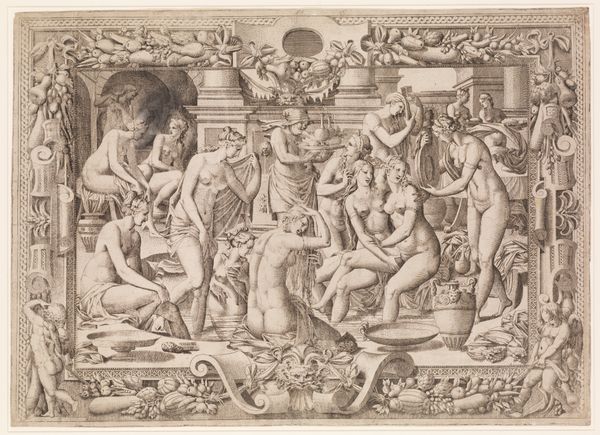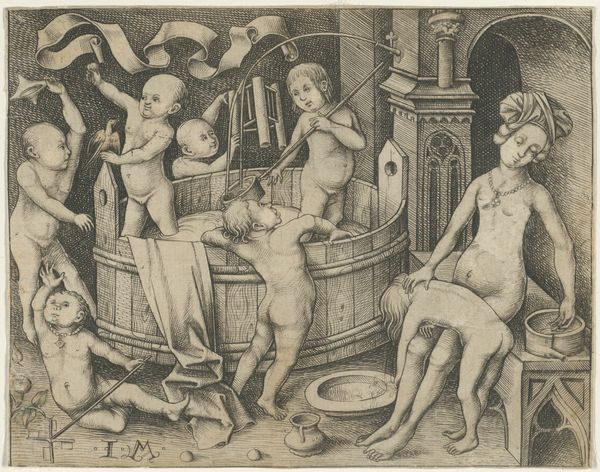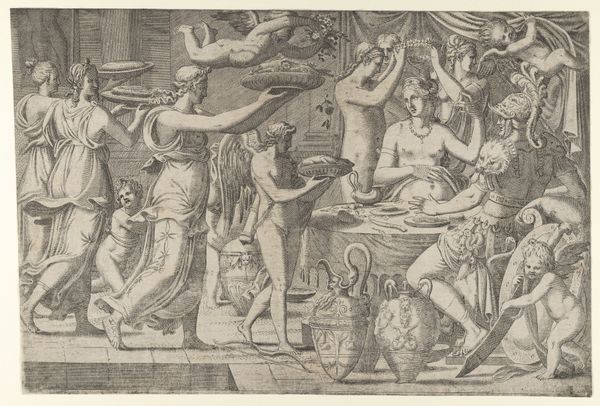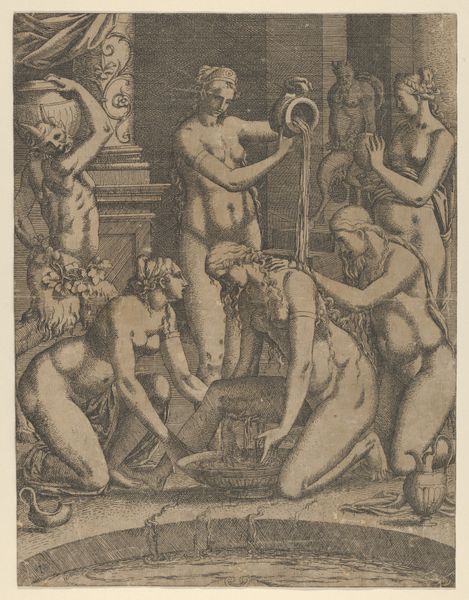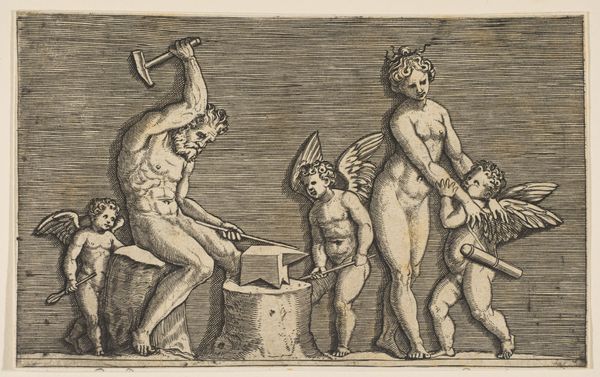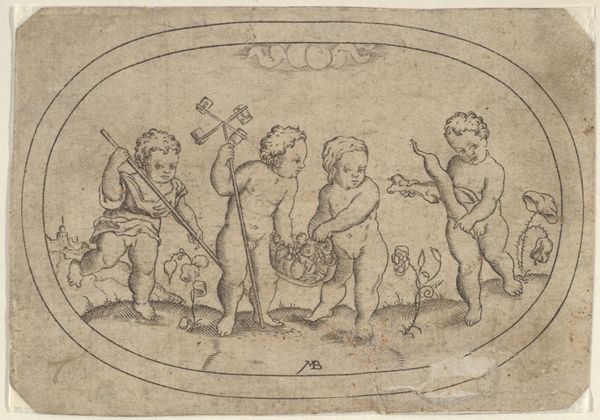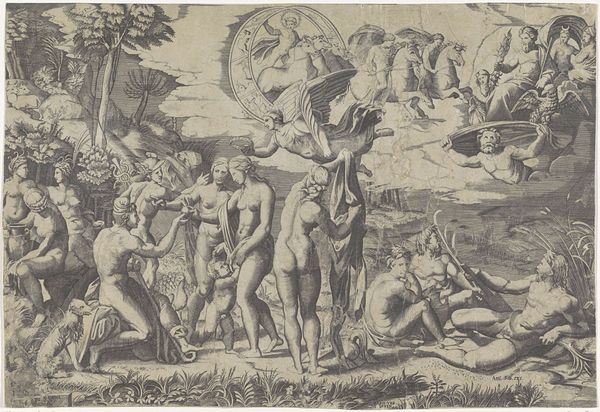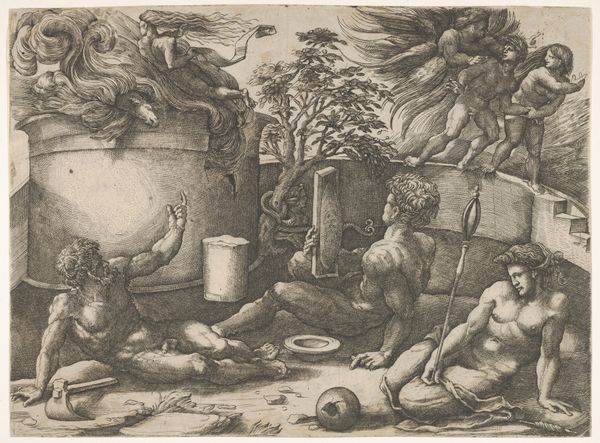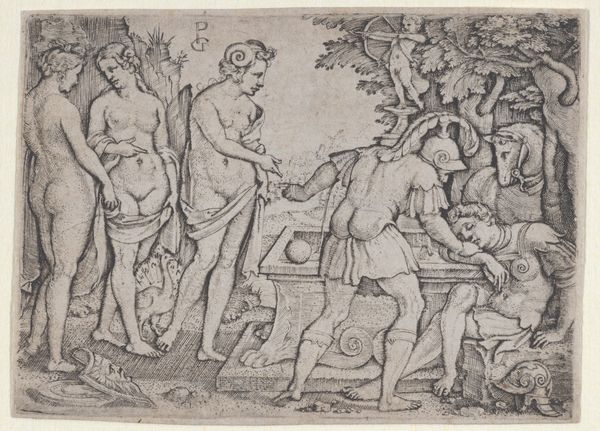
print, engraving
# print
#
figuration
#
genre-painting
#
northern-renaissance
#
engraving
Copyright: National Gallery of Art: CC0 1.0
Editor: This engraving, "Seven Children at Play," was created around 1490 by Israhel van Meckenem. The detail is astonishing! What strikes me most is the…unrestrained energy, almost chaotic, despite the rigid lines of the engraving. How do you interpret this piece? Curator: Indeed. The chaos itself is significant. The symbols tell us more than meets the modern eye. Notice the child wielding what appears to be a miniature scythe. What might that symbolize when paired with carefree play? Editor: Death? The brevity of childhood, perhaps? Curator: Precisely! *Memento mori* - a reminder of mortality - wasn't confined to skull imagery alone. Van Meckenem subtly weaves reminders of life's fragility within scenes of childhood, a stark juxtaposition common in that era. And look at the child pouring liquid – are they offering nourishment or engaging in some kind of reckless action, possibly drowning someone? What emotional registers do these juxtapositions evoke in you? Editor: A sense of unease, definitely. Like childhood isn't all innocent fun and games, but contains shadows of adult worries. Also, it's striking to see the shapes these children's bodies make, squirming, kicking... almost feels medieval or ancient, an echo of older artworks. Curator: The art recalls pre-Renaissance understanding of youth – they haven't achieved classical form. Through this almost careless rendering, there seems to be a rejection of the ideals that had not taken root everywhere in Europe at the time, and reminds us that those classical ideas were always superimposed onto something else. Van Meckenem provides the other images that form the cultural memory of the North. What lasting impression does the work make? Editor: That appearances can be deceiving; joy and mortality can intertwine. And, it's a potent reminder that even seemingly simple genre scenes can hold layers of cultural meaning.
Comments
No comments
Be the first to comment and join the conversation on the ultimate creative platform.
